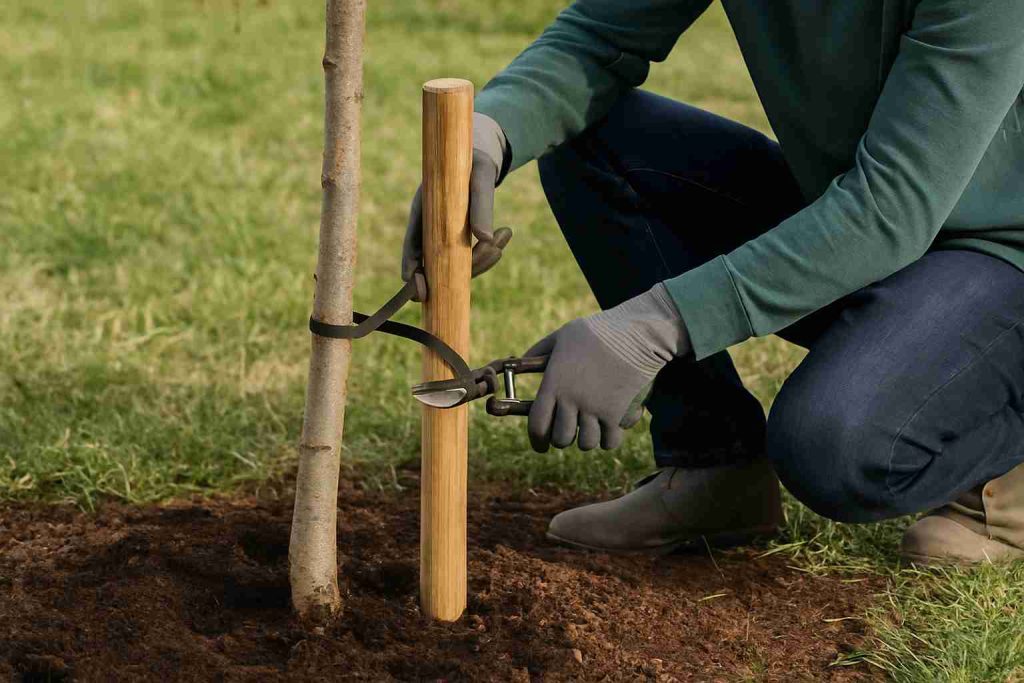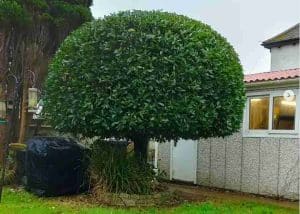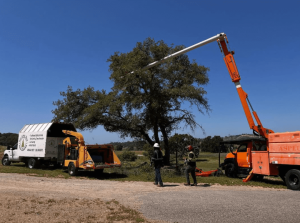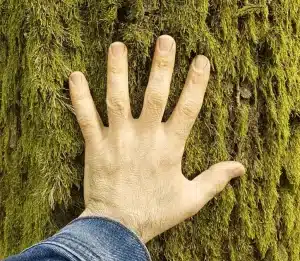The best way to remove tree stakes is to cut the ties first, loosen the stakes from the soil, and gently lift them out once the tree can stand on its own. This process ensures the trunk isn’t damaged and the roots continue to grow stronger. One of the most effective approaches is to test the tree’s stability before removal. If the trunk bends without the root ball shifting, it’s ready. Removing stakes at the right time encourages natural growth, protects bark health, and helps your tree thrive long term. If you want your tree to stay healthy and survive future storms, keep reading for a complete step-by-step guide with tips to avoid common mistakes.
Table of Contents

Why Tree Stakes Are Used?
When trees are newly planted, especially in open areas, they often need extra support to stay upright. Strong winds, heavy rain, or even loose soil can cause a young tree to lean or uproot. Tree stakes provide temporary stability until the roots grow deep and wide enough to anchor the trunk on their own.
Stakes are most commonly used for nursery trees, landscape plantings, or in areas with high foot traffic. They serve an important purpose, but they’re not meant to stay forever. Understanding their role helps you see why timely removal is just as important as installing them correctly.
How Long Should Stakes Stay in Place?
One of the most common questions people ask is: How long should I leave tree stakes in the ground? The general rule is about 6 to 12 months. By that time, most young trees develop enough root strength to hold themselves up.
Leaving stakes in longer than necessary can cause issues. The tree might rely on the support instead of building its own stability. This often results in a weaker trunk, less root growth, and even scars from ties digging into the bark. For fast-growing species, stakes can sometimes be removed even earlier. For slower growers or trees in windy locations, they may need the full year.
Signs It’s Time to Remove Tree Stakes
Knowing the exact moment to remove stakes can feel tricky. Instead of watching the calendar alone, check for these signs:
- The tree stands straight without pulling on the ties. If the trunk doesn’t lean heavily against the stake, it’s ready.
- The trunk feels sturdy. Gently wiggle the tree near the base. If the root ball doesn’t move much, the roots are taking hold.
- The bark shows stress. If ties are digging into the bark or leaving marks, it’s a warning sign the stakes have been in too long.
- Branches are growing evenly. Natural movement in the wind helps strengthen trunks and branches. If you notice slow growth, it may be due to over-staking.
By observing these clues, you’ll know the right time to move forward with removal.

Preparing to Remove Tree Stakes Safely
Before you grab tools, take a few minutes to prepare. Proper preparation makes the process safer for both you and the tree.
- Check soil conditions. Removal is easier when the soil isn’t waterlogged. Wet ground can make roots less stable.
- Gather your tools. You may need pruning shears or scissors to cut ties, and possibly a shovel or small digging tool if the stakes are buried deep.
- Inspect the ties. Some may be reusable, while others might need to be cut and thrown away.
- Plan for stability. If you’re not sure whether the tree can stand on its own, be ready to add temporary support or re-stake in a lighter way.
Taking a few minutes for preparation prevents damage and keeps the process simple.
Step-by-Step Guide: How to Remove Tree Stakes
Step 1: Check the Tree’s Stability
Stand next to the tree and gently push it back and forth. If the trunk bends naturally without the root ball shifting in the soil, the tree is ready for independence.
Step 2: Remove Ties First
Use scissors or pruning shears to carefully cut the ties holding the trunk to the stake. Do this gently to avoid scraping or tearing the bark.
Step 3: Loosen the Stakes
If the stakes are above ground, simply pull them out. For deeper stakes, wiggle them back and forth until the soil loosens. A shovel can help if the stake is firmly buried.
Step 4: Lift the Stakes Out
Once loose, pull the stakes straight up and out of the ground. Take care not to disturb the surrounding soil near the root ball.
Step 5: Monitor the Tree
Step back and observe the tree. If it stands tall without leaning, you’ve completed the process. Keep an eye on it over the next week to ensure stability.
Common Mistakes to Avoid During Removal
Even though removing stakes sounds simple, mistakes can harm your tree. Avoid these pitfalls:
- Removing stakes too early. If roots aren’t strong enough, the tree might lean or uproot.
- Leaving stakes too long. Over-staking weakens the trunk and slows natural growth.
- Cutting into the bark. Be careful with sharp tools to avoid damaging the trunk.
- Disturbing the roots. Forcing stakes out can break roots if you dig too close to the base.
- Ignoring the weather. Don’t remove stakes right before a major storm or during very windy seasons.
By steering clear of these mistakes, you’ll give your tree the best chance at healthy, long-term growth.
What to Do if the Tree Still Feels Unstable
Sometimes, after removing the stakes, a tree still seems wobbly. Don’t panic—this is common. Here’s what to do:
- Re-stake with lighter support. Instead of tying the trunk tightly, use soft ties that allow some movement.
- Check the soil. Loose or sandy soil may need to be compacted around the base. Adding mulch can also help.
- Water deeply. Healthy root growth depends on consistent watering. This strengthens the anchor system.
- Trim heavy branches. If the top of the tree is too heavy, careful pruning can reduce weight until roots catch up.
The goal is not to make the tree dependent on stakes but to give just enough help while it adjusts.
Caring for Your Tree After Stake Removal
Once the stakes are gone, your tree enters a new stage of growth. A little care goes a long way in ensuring success:
- Water regularly. Deep watering encourages strong root systems.
- Add mulch. A 2–3 inch layer around the base helps retain moisture and control weeds.
- Fertilize if needed. Young trees sometimes need extra nutrients to thrive.
- Protect from damage. Lawn equipment, pets, and foot traffic can harm exposed roots or bark.
- Monitor progress. Check weekly for leaning or signs of stress. Early action prevents bigger problems later.
With this care, your tree will continue to strengthen naturally without relying on artificial support.
Benefits of Removing Stakes at the Right Time
The timing of stake removal makes a big difference in how your tree develops. Removing them too late can weaken growth, while removing them too early risks instability. When done correctly, you’ll notice clear benefits:
- Stronger trunks. Trees that sway naturally in the wind grow thicker and more resilient.
- Deeper roots. Without stakes, roots spread farther and anchor better in the soil.
- Healthier bark. No more risk of ties cutting into the trunk and leaving scars.
- Improved appearance. A tree standing tall on its own looks more natural and adds curb appeal.
- Long-term survival. Trees that establish early independence are less likely to fall during storms.
These benefits show why proper stake removal is not just a small chore but an important step in long-term tree care.
Final Thoughts
Removing tree stakes may seem like a small task, but it plays a big role in how healthy and strong your trees become. The key is timing—wait until the roots are stable but don’t let the stakes overstay their purpose. By following a careful step-by-step approach, you’ll help your tree grow naturally, develop a sturdy trunk, and thrive for years to come.
Whether you’re caring for a backyard tree or maintaining a larger landscape, the process is quick, simple, and worth the effort. With the right care after removal, you’ll enjoy shade, beauty, and stability from your tree without worrying about weak roots or storm damage.
FAQs
Can I reuse tree stakes for another tree?
Yes, wooden or metal stakes can be reused if they’re still in good condition. Just make sure they’re not rotting or bent.
What happens if I never remove tree stakes?
Leaving them in too long can cause weak trunks, shallow roots, and even permanent scars on the bark.
Do all trees need stakes when planted?
Not always. Many trees do fine without stakes, especially if planted in calm areas with stable soil.
What tools do I need to remove tree stakes?
Usually, pruning shears or scissors for ties and a shovel for stubborn stakes. Most removals take only a few minutes.
When is the best season to remove stakes?
Late spring or early summer is often ideal, as roots grow fastest during warm months. Avoid removal during stormy seasons.
Should I remove stakes gradually or all at once?
Most trees adjust fine if stakes are removed all at once. However, if the tree still wobbles, you can loosen ties gradually first.
How do I know if my tree needs to be re-staked?
If the trunk leans heavily or the root ball shifts when moved, add light staking for another few months.



